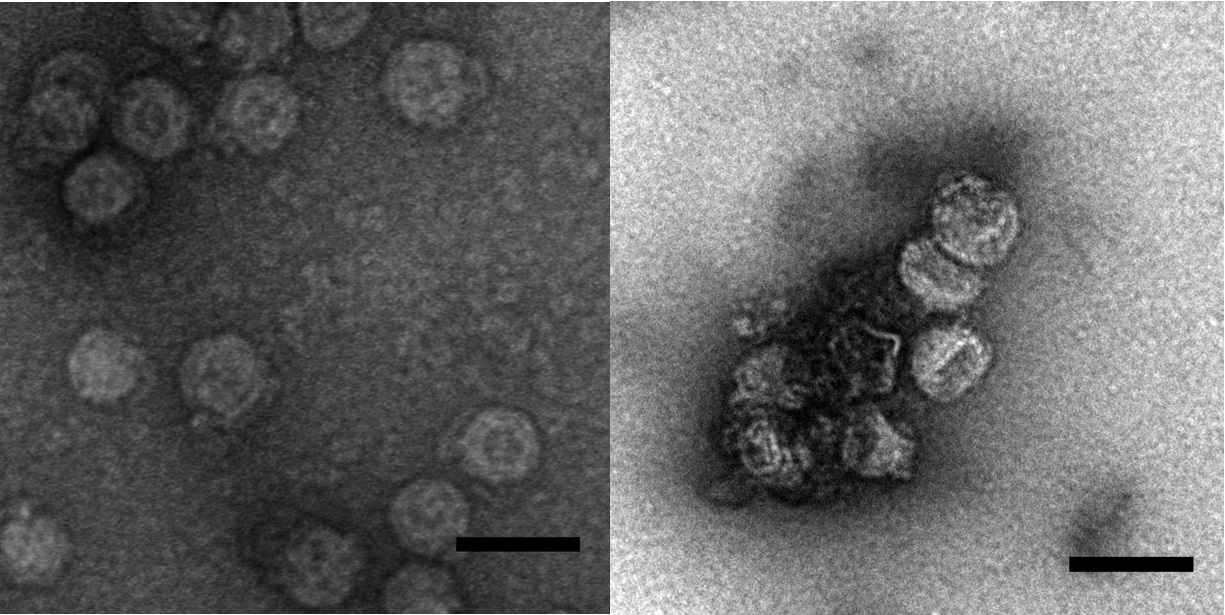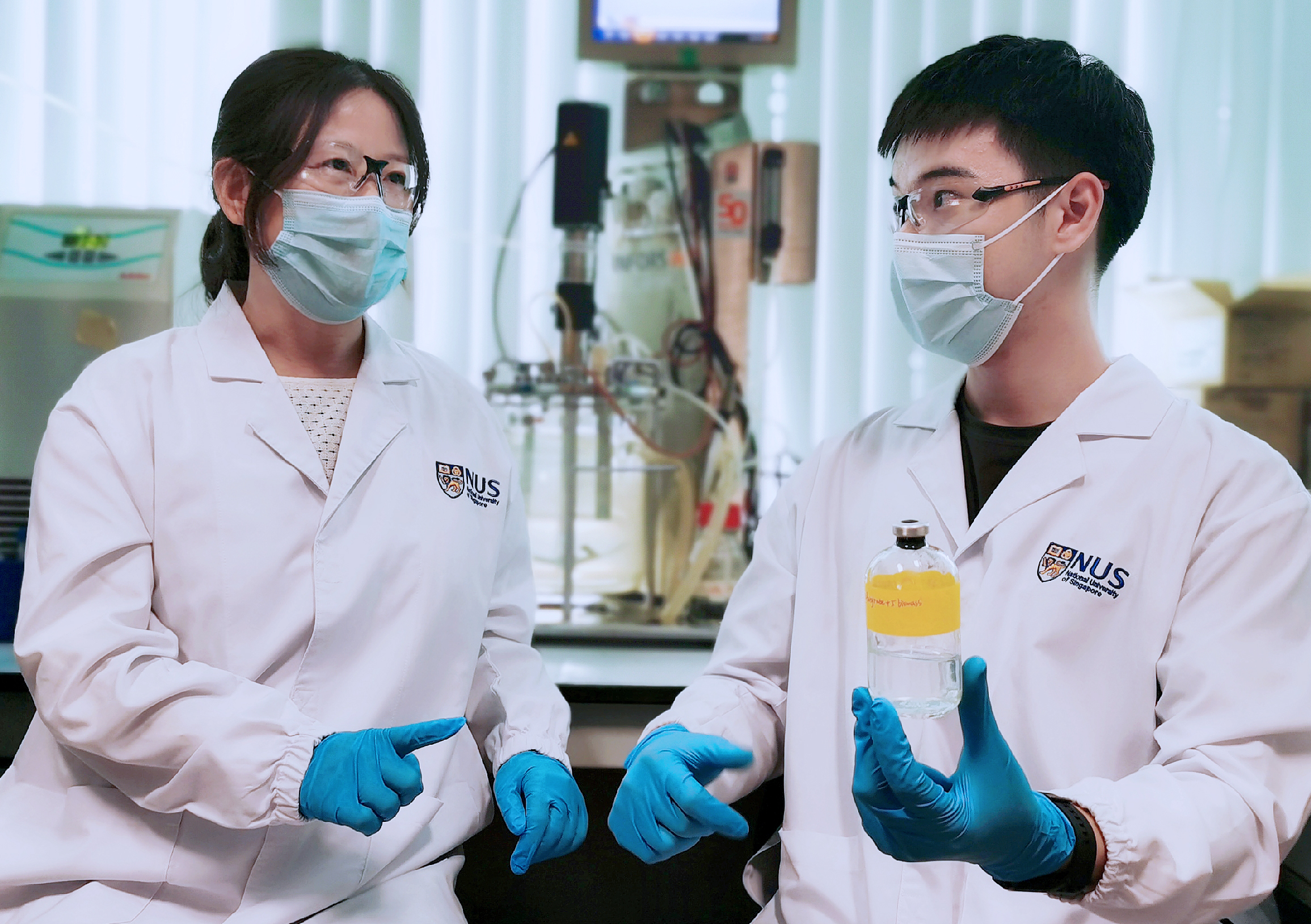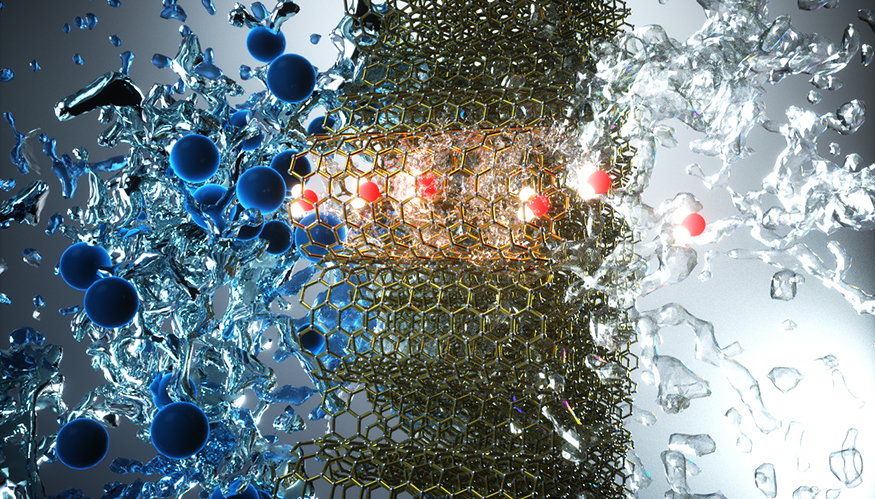Scientists from the National University of Singapore have successfully synthesised a special protein-mimic that can self-assemble into a pore structure. When incorporated into a lipid membrane, the pores permit selective transport of water across the membrane while rejecting salt (ions).
Tag: Water Purification
Microbial predators cause seasonal fluctuations in wastewater treatment
The community of microbial predators influences the composition of the bacterial community in wastewater. This explains seasonal variations in the microbial community that affect the efficiency of water treatment.
Don’t wait, desalinate: new water purification system cuts cost, energy expenses
A water purification system created by researchers at the Beckman Institute for Advanced Science and Technology separates salt and unnecessary particles with an electrified version of dialysis. Successfully applied to wastewater, the method saves money and saps 90% less energy than its counterparts.
This loofah-inspired, sun-driven gel could purify all the water you’ll need in a day
Devices currently in development that clean up dirty water using sunlight can only produce a few gallons of water each day. But now, researchers in ACS Central Science report how a sunlight-powered porous hydrogel could potentially purify enough water to meet daily needs — even when it’s cloudy.
Researchers cook up a new way to remove microplastics from water
Researchers at Princeton Engineering have found a way to turn your breakfast food into a new material that can cheaply remove salt and microplastics from seawater.
New Filtering Method Promises Safer Drinking Water, Improved Industrial Production
Researchers create thin film polymer membranes capable of separating fluoride from chloride and other ions. Targeted ion selectivity by the filtering membranes could have important implications for water purification, environmental remediation and industrial production.

Standard water treatment technique removes and inactivates an enveloped virus
Researchers reporting in ACS’ Environmental Science & Technology have discovered that a standard water treatment technique, called iron (III) coagulation, and its electrically driven counterpart, iron (0) electrocoagulation, can efficiently remove and inactivate a model enveloped virus.

NUS engineers found new multitasking microbe for simpler, cheaper and greener wastewater treatment
Researchers from NUS have discovered a new strain of bacterium that can remove both nitrogen and phosphorous from sewage wastewater. Their findings offer a simpler, cheaper and greener method of wastewater treatment.

Going with the flow
LLNL researchers have created carbon nanotube (CNT) pores that are so efficient at removing salt from water that they are comparable to commercial desalination membranes. These tiny pores are just 0.8 nanometers in diameter. In comparison, a human hair is 60,000 nanometers across.

Two is Better Than One
UPTON, NY – A collaboration of scientists from the National Synchrotron Light Source II (NSLS-II), Yale University, and Arizona State University has designed and tested a new two-dimensional (2-D) catalyst that can be used to improve water purification using hydrogen peroxide.